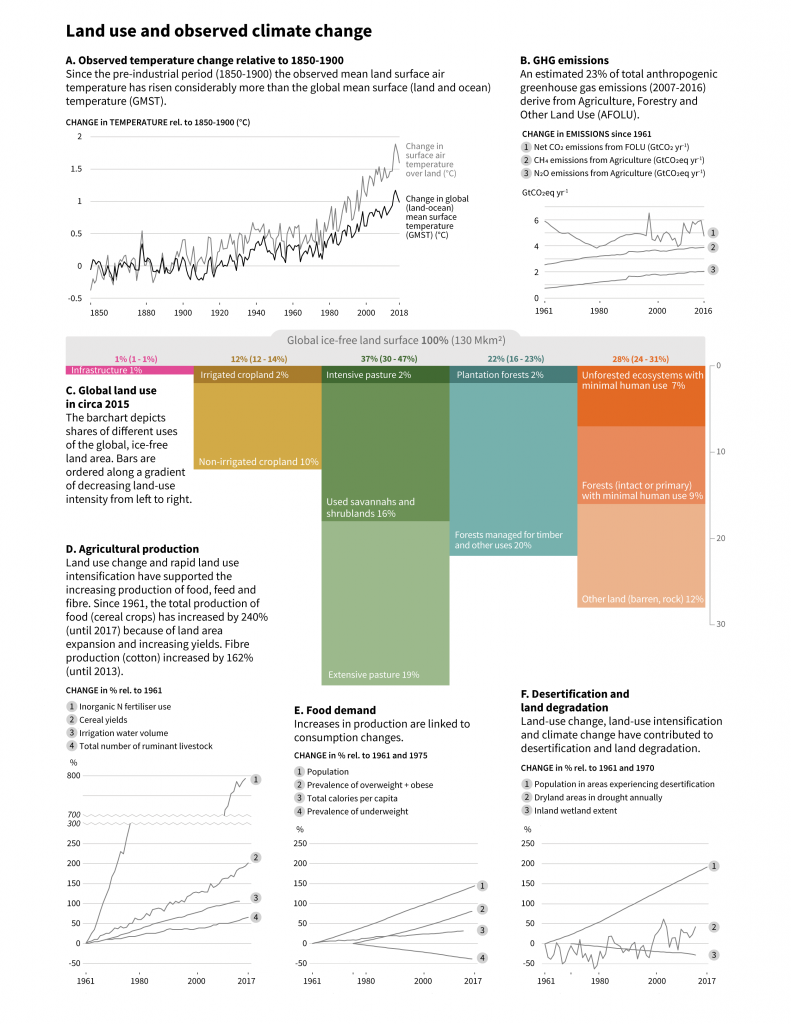
Figure SPM.1
A representation of the land use and observed climate change covered in this assessment report. Panels A-F show the status and trends in selected land use and climate variables that represent many of the core topics covered in this report. The annual time series in B and D-F are based on the most comprehensive, available data from national statistics, in most cases from FAOSTAT which starts in 1961. Y-axes in panels D-F are expressed relative to the starting year of the time series (rebased to zero). Data sources and notes: A: The warming curves are averages of four datasets {2.1, Figure 2.2, Table 2.1} B: N2O and CH4 from agriculture are from FAOSTAT; Net CO2 emissions from FOLU using the mean of two bookkeeping models (including emissions from peatland fires since 1997). All values expressed in units of CO2-eq are based on AR5 100-year Global Warming Potential values without climate-carbon feedbacks (N2O=265; CH4=28). (Table SPM.1) {1.1, 2.3} C: Depicts shares of different uses of the global, ice-free land area for approximately the year 2015, ordered along a gradient of decreasing land-use intensity from left to right. Each bar represents a broad land cover category; the numbers on top are the total percentage of the ice-free area covered, with uncertainty ranges in brackets. Intensive pasture is defined as having a livestock density greater than 100 animals/km². The area of ‘forest managed for timber and other uses’ was calculated as total forest area minus ‘primary/intact’ forest area. {1.2, Table 1.1, Figure 1.3} D: Note that fertiliser use is shown on a split axis. The large percentage change in fertiliser use reflects the low level of use in 1961 and relates to both increasing fertiliser input per area as well as the expansion of fertilised cropland and grassland to increase food production. {1.1, Figure 1.3} E: Overweight population is defined as having a body mass index (BMI) > 25 kg m-2; underweight is defined as BMI < 18.5 kg m-2. {5.1, 5.2} F: Dryland areas were estimated using TerraClimate precipitation and potential evapotranspiration (1980-2015) to identify areas where the Aridity Index is below 0.65. Population data are from the HYDE3.2 database. Areas in drought are based on the 12-month accumulation Global Precipitation Climatology Centre Drought Index. The inland wetland extent (including peatlands) is based on aggregated data from more than 2000 time series that report changes in local wetland area over time. {3.1, 4.2, 4.6}